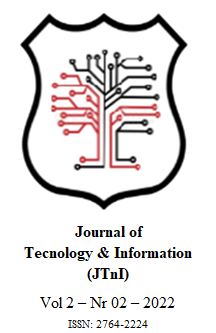The Three Pillars of Information Security in Chinese Internet
Keywords:
Chine, Network, Availability, Confidentiality, Integrity, Information SecurityAbstract
For seventy years People's Republic of China has been experiencing the result of a social revolution for seventy years, its impacts are being observed in several areas, including the fields of information technology. The recent political conflicts that the Chinese have been witnessing is one of the reasons why the internet in the country is increasingly restricted to contact with the rest of the World Wide Web, which directly impacts the local culture and economy. In this context this study aims to compare the concepts of confidentiality, integrity and availability with the current Chinese virtual situation. The result of the study are the points of divergence and convergence of freedom in the use of the Internet.
References
Cao, C., Suttmeier, R., & Simon, D. (2006). China’s 15 Year Science and Technology Plan. Physics Today, 59(12), 38–43.
CAS. (1996). Obligations and Rights—ACADEMIC DIVISIONS OF THE CHINESE ACADEMY OF SCIENCES. http://english.casad.cas.cn/Me/OR/200905/t20090515_3152.html
CCNIC. (2021). The 48th Statistical Report on China’s Internet Development (No 48). China Internet Network Information Center. https://www.cnnic.com.cn/IDR/ReportDownloads/202111/P020211119394556095096.pdf
Cheung, T. M. (2018). The rise of China as a cybersecurity industrial power: Balancing national security, geopolitical, and development priorities. Journal of Cyber Policy, 3(3), 306–326. https://doi.org/10.1080/23738871.2018.1556720
Chung, R. W., & Fu, K. (2022). Tweets and Memories: Chinese Censors Come after Me. Forbidden Voices of the 1989 Tiananmen Square Massacre on Sina Weibo, 2012-2018. Journal of Contemporary China, 31(134), 319–334.
Creemers, R. (2016). Cyber China: Upgrading Propaganda, Public Opinion Work and Social Management for the Twenty-First Century. Journal of Contemporary China, 85–100.
Diana, A., Tojeiro, C., Cardoso, T. M., Lucas, T. J., & Moraes, E. A. (2016). COMPUTAÇÃO EM NUVEM - DISPONIBILIDADE: PESQUISA APLICADA NA FACULDADE DE TECNOLOGIA DE OURINHOS. RETEC - Ourinhos, 9(2), 75–79.
Fernandes, N. O. C. (2013). Segurança da Informação. e-TEC. https://www.fatecourinhos.edu.br/retec/index.php/retec/article/view/214
Grassi, P. A., Garcia, M. E., & Fenton, J. L. (2017). Digital Identity Guidelines (p. 1–104). National Institute of Standards and Technology. https://doi.org/10.6028/NIST.SP.800-63-3
GREATFIRE. (2011). Censorship of Domains in China. https://en.greatfire.org/search/domains
Guillermaz, Jacques. (1968). Histoire du parti communiste chinois / Jacques Guillermaz. Payot Paris. https://catalogue.nla.gov.au/Record/605270
Hintzbergen, J., Hintzbergen, K., Smulders, A., & Baars, H. (2018). Fundamentos de Segurança da Informação: Com base na ISO 27001 e na ISO 27002. (3o ed). Brasport.
ISO. (2013). International Standard Organization—ISO/IEC 27001. Em ISO. https://www.iso.org/standard/54534.html
Jiang, Min., & Fu, K.-W. (2018). Chinese Social Media and Big Data: Big Data, Big Brother, Big Profit? Policy & Internet, 10(4), 372–392. https://doi.org/10.1002/poi3.187
Majerowicz, E. (2020). A china e a economia política internacional das tecnologias da informação e comunicação. GEOSUL, 35(77), 1–21.
Miao, W., Zhu, H., & Chen, Z. (2018). Who’s in charge of regulating the Internet in China: The history and evolution of China’s Internet regulatory agencies. China Media Research, 14(3), 1+. Gale Academic OneFile.
Nonnenberg, M. J. B. (2010). China: Estabilidade e crescimento econômico. Brazilian Journal of Political Economy, 201–218.
Pomar, W. (2003). A Revolução Chinesa. Editora UNESP.
Tipton, S. J., Forkey, S., & Choi, Y. B. (2016). Toward Proper Authentication Methods in Electronic Medical Record Access Compliant to HIPAA and C.I.A. Triangle. Journal of Medical Systems, 40(4), 100. https://doi.org/10.1007/s10916-016-0465-x
Xiong, J., & Ristivojević, D. (2021). #MeToo in China: How Do the Voiceless Rise Up in an Authoritarian State? Politics & Gender, 17(3), 490–499.
Yang, F., & Xu, J. (2018). Privacy concerns in China’s smart city campaign: The deficit of China’s Cybersecurity Law. Asia & the Pacific Policy Studies, 5(3), 533–543. https://doi.org/10.1002/app5.246
Zittrain, J., & Edelman, B. (2003). Internet Filtering in China. Berkman Center for Internet & Society, 1–21.
Downloads
Published
Versions
- 2022-07-04 (2)
- 2022-07-01 (1)












